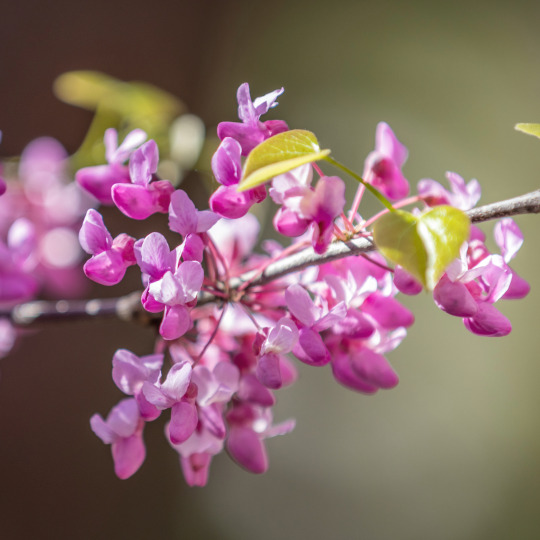#SpringtimeSplendor
Explore tagged Tumblr posts
Text
Embrace Native Trees: The Eastern Redbud (Cercis canadensis)

Adding a splash of color to your landscape has never been easier with the Eastern Redbud (Cercis canadensis). This stunning native tree can transform your garden with its vibrant pink flowers and charming heart-shaped leaves. Let’s dive into why the Eastern Redbud is the perfect addition to your backyard and how it can benefit both you and local wildlife.
Springtime Splendor
Imagine your garden waking up from winter with a burst of color. The Eastern Redbud dazzles in early spring, its branches adorned with small, vibrant pink flowers before the leaves even emerge. These blooms create a breathtaking display that can turn any yard into a picturesque scene, making the Redbud a favorite among gardeners looking to add beauty and charm to their outdoor spaces.
Wildlife Haven
But the Eastern Redbud isn’t just about looks. It’s also a fantastic choice for creating a wildlife-friendly garden. Here’s why:
Pollinator Paradise: The vibrant flowers attract a variety of pollinators, including bees and butterflies. By planting a Redbud, you’re helping support these crucial creatures, which play a vital role in our ecosystems.
Bird Buffet: Once the flowers fade, the Redbud produces seed pods that are a valuable food source for birds. Sparrows, finches, and other species will thank you for this delicious addition to their diet.
Planting and Caring for Your Eastern Redbud
Ready to bring this beautiful tree into your garden? Here are some tips to ensure your Eastern Redbud thrives:
Choose the Right Spot: Eastern Redbuds prefer well-drained soil and can tolerate both full sun and partial shade. Make sure you plant your tree where it has enough space to grow to its full size, which can be up to 30 feet tall and wide.
Watering: Young Redbuds need regular watering, especially during dry spells. Once established, they are relatively drought-tolerant, but a little extra water during hot, dry periods can help them stay healthy.
Mulching: Apply a layer of mulch around the base of your tree to retain moisture, regulate soil temperature, and suppress weeds.
Pruning: Prune your Redbud in late winter or early spring to remove any dead or diseased branches and to shape the tree. This helps maintain its health and beauty.
Why Choose Native?
Planting native trees like the Eastern Redbud has numerous benefits. They are well-adapted to local conditions, require less maintenance, and support local wildlife. By choosing natives, you’re not only enhancing your garden’s beauty but also contributing to a healthier environment.
Conclusion
The Eastern Redbud is more than just a tree; it’s a symbol of the beauty and resilience of nature. By planting one in your garden, you’re making a statement about the importance of preserving our natural heritage and supporting local ecosystems. So why wait? Add a splash of color and a touch of nature’s magic to your landscape with an Eastern Redbud.
For more tips on sustainable living and gardening, be sure to explore our other blog posts. Happy planting!
#EasternRedbud#NativeTrees#SpringtimeSplendor#WildlifeGarden#PollinatorFriendly#SustainableGardening#GardenInspiration#PlantNative#EcoFriendlyGardening#TreePlanting#BackyardBliss#GardenTips#NatureLovers#GreenLiving#BeautifyYourYard#greenguidetips
0 notes
Text
What You Need to Know Before You See the Woodburn Farm Tulips

Attention all nature lovers. Before you head to the captivating Woodburn Farm Tulips, check out these must-know tips to make your visit truly unforgettable.
0 notes
Text
What You Need to Know Before You See the Woodburn Farm Tulips

Get ready for a blooming good time. Here's everything you need to know before you visit the enchanting Woodburn Farm Tulips.
0 notes